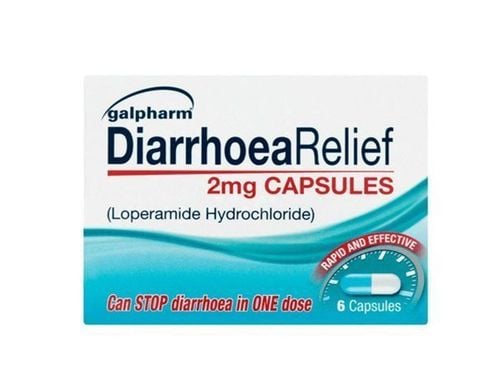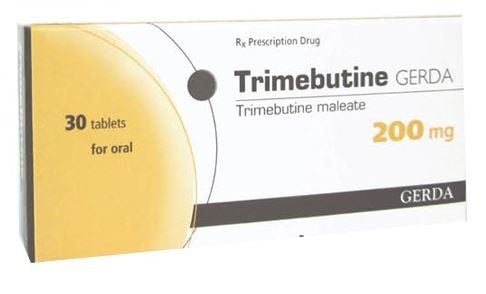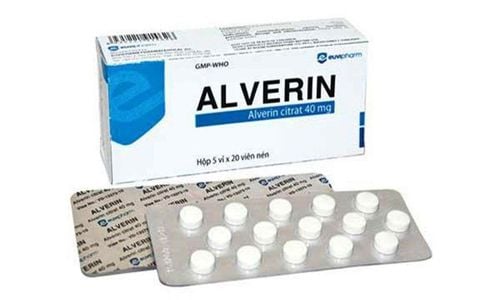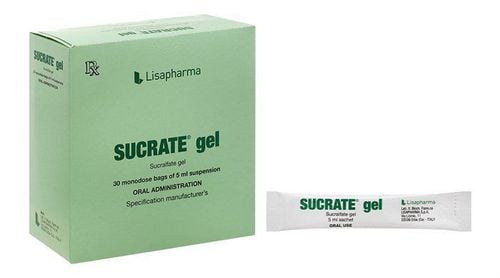This is an automatically translated article.
Pentanis medicine has the main active ingredient Pantoprazol 40mg and other excipients in sufficient quantity. This drug is used in the treatment of diseases of the digestive tract.
1. What is Pentanis drug?
What is Pentanis drug? Pentanis medicine has the main active ingredient Pantoprazol 40mg and other excipients in sufficient quantity. This medicine is used in the treatment of diseases of the digestive tract.
Pentanis drug is prepared in the form of lyophilized powder for injection. Packing is a medicine box consisting of 1 vial of powder for injection and 1 vial of 10ml NaCl 0.9%
1.1 solvent. Pharmacodynamics of the active ingredient Pantoprazol Active ingredient Pantoprazol is a selective proton pump inhibitor; Chemically, it is a derivative of benzimidazole.
1.2. Pharmacokinetics of the active ingredient Pantoprazol Absorption: Active ingredient Pantoprazol is rapidly absorbed from the gastrointestinal tract, which varies depending on the dose and gastric pH. Oral bioavailability can be up to 70% with repeated use. Distribution: Active ingredient Pantoprazole is strongly bound to plasma proteins. Metabolism: The drug is metabolised in the liver. Elimination ability: The drug is eliminated by the kidneys 80%, the mean half-life is about 30-90 minutes. 1.3. The effect of the active ingredient Pantoprazol Active ingredient Pantoprazol has a specific and irreversible inhibitory effect on the proton pump caused by its selective effect on the gastric cell wall, so the drug has a faster and more effective effect than other drugs. other. The healing rate or the ability to heal ulcers can reach 95% after 8 weeks of treatment. Active ingredient Pantoprazol has little effect on gastric volume, pepsin secretion, gastric endogenous factor and gastric contractility.
2. What are the uses of Pentanis medicine?
Pentanis drug is indicated for use in cases of peptic ulcer, gastroesophageal reflux disease - oesophagitis.
3. How to use and dose Pentanis
How to use and dose Pentanis as follows:
3.1. How to use Pentanis Intravenous: Mix 40mg lyophilized powder for injection with 10ml of 0.9% NaCl solution and inject slowly intravenously for at least 2 minutes. Intravenous infusion : Mix 40mg lyophilized powder for injection with 100ml of 0.9% NaCl solution, or 5% dextran or Ringer Lactate solution. The reconstituted solution should be administered intravenously over a period of approximately 15 minutes. The reconstituted solution should not be mixed or shared with other medications. The drug solution should be used within 12 hours after reconstitution and preferably immediately after reconstitution to ensure microbiology. Half the volume for injection should be used if only a 20 mg dose is needed, discarding any unused solution. 3.2. Dosage of the drug Pentanis Dosage to treat peptic ulcer, severe gastroesophageal reflux disease: 40 mg once daily. Dosage for people with severe liver failure: reduce the dose or use it every other day. The maximum dose is 20 mg/day or 40 mg once every 2 days. Dosage for patients with renal failure: no dose adjustment is required. Dosage in children: not recommended because safety and efficacy have not been established. The duration of intravenous therapy is usually short and should be switched to oral administration as soon as possible.
4. Undesirable effects of Pentanis
During the use of Pentanis, patients may experience some of the following side effects:
Treatment with Pentanis may occasionally cause headache or mild diarrhea and in rarer cases such as: sadness vomiting, upper abdominal pain, flatulence, skin rash, itching and dizziness. In rare cases, edema, fever or thrombophlebitis may occur. Patients need to proactively notify the treating doctor of unwanted effects encountered when using Pentanis for guidance on handling and changing drug dosage when necessary.
5. Interactions of Pentanis
Pentanis drug interactions may alter its ability to work or increase the effects of unwanted effects. Accordingly, you need to proactively list to your treating doctor or pharmacist all prescription and nonprescription drugs, herbal products, vitamins and minerals or care foods. health care you are taking to minimize possible adverse drug interactions.
6. Some notes when using Pentanis
During the use of Pentanis, you may experience some of the following side effects:
6.1. Contraindications of Pentanis Drugs Pentanis should not be used for cases with a history of sensitivity to the active ingredient Pantoprazole and other excipients. Clinical experience with the use of pantoprazole-containing medicines during pregnancy is limited. There is currently no information on the excretion of Pantoprazole in human milk. However, you should only take medicines containing the active ingredient pantoprazole when the benefits to the mother are considered to outweigh the risks to the fetus and baby. Contraindications of Pentanis should be understood as absolute contraindications. This means that there are no contraindications to the use of Pentanis for any reason.
6.2. Precautions while taking Pentanis Precautions when using Pentanis as follows:
Before using proton pump inhibitors, the possibility of gastric cancer must be excluded. This is because the drug can mask symptoms, delaying the diagnosis of cancer. Use caution when using Pentanis for people with liver disease, cirrhosis, severe liver failure. When using Pentanis, liver function must be monitored. Use caution when using Pentanis for people with kidney failure, the elderly. For children, the drug should not be used, because safety and effectiveness have not been established. 6.3. Use in pregnancy and lactation For pregnancy: There are no adequate studies on the use of drugs containing the active ingredient pantoprazol in humans during pregnancy. Animal studies have demonstrated that pantoprazole crosses the placental barrier, but no teratogenic effects have been observed. Dosages of 15 mg/kg slow down fetal bone growth. Therefore, you should only use Pentanis when absolutely necessary during pregnancy. Use in lactation: It is not known whether pantoprazole is excreted in human milk. However, in animal experiments, pantoprazole and its metabolites were excreted in the milk of rats. Based on the rat carcinogenic potential of the active ingredient pantoprazole, the mother should consider whether to discontinue nursing or discontinue the drug, depending on the benefit of pantoprazole to the mother. 6.4. Effects of Pentanis when driving and operating machines: Do not drive and operate machines while using Pentanis.
Store Pentanis in a dry place, away from direct light. In addition, it is necessary to keep Pentanis medicine out of the reach of children and family pets. Absolutely do not use Pentanis after the expiration date. Consult environmental companies for medication handling and disposal.
Above is all information about Pentanis drug, patients need to carefully read the instructions for use, consult a doctor / pharmacist before using. Absolutely do not arbitrarily buy Pentanis medicine to treat diseases at home because there may be unwanted side effects on health.
Follow Vinmec International General Hospital website to get more health, nutrition and beauty information to protect the health of yourself and your loved ones in your family.













